Please click the green “plus” on the left to see the biography of the candidates.
Early stage researcher
| Mission statement (Please click the plus on the left to see the biographies) | |||
|---|---|---|---|
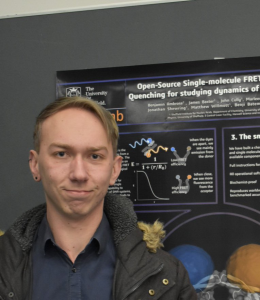 | Benjamin Ambrose bambrose1@sheffield.ac.uk University of Sheffield, UK | I am excited about the potential of the FRET community to collaboratively tackle larger problems such as the dissemination of open source hardware and analysis tools, and the advancement and standardisation of FRET for structural biology, however, I am equally keen to see the community be used as an open space to discuss smaller problems, and share simple tips and tricks. For example; a year ago our lab was plagued by an inability to acquire optically clean BSA for coverslip passivation, and out of desperation I eventually e-mailed a few other labs I knew to ask if anyone had advice. What I found interesting was that not only had many other people encountered the same problem, but that I was also offered multiple different solutions. As well as tackling the bigger questions, I would like to see the FRET community develop an environment of "no stupid questions" for junior researchers so that we can spend less time reinventing the wheel and more time advancing the field. | Biography I originally have a background in biology, having completed an integrated undergraduate/masters degree course in biochemistry and genetics at the University of Sheffield in 2017. I then joined the Craggs lab as a PhD student where I have been working on application and validation of open-source single-molecule FRET, method development of novel single-molecule fluorescence spectroscopic techniques, and molecular dynamics of FRET systems. I have also been involved in the setting up and running of SMaSh (single molecule at Sheffield) which is a multi-department interest group for researchers using single-molecule techniques. |
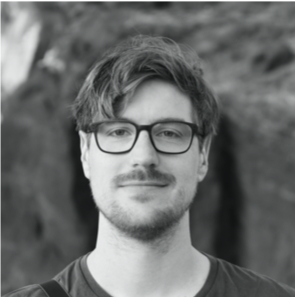 | Anders Barth, PhD anders.barth@hhu.de Heinrich Heine University, Germany | I believe that the free availability of software and the standardization of analysis procedures will be vital for the growth of the field. To this end, I would like to initiate joint efforts for community-based software development and data exchange formats, so that new developments can be more readily applied by researchers. In my eyes, the major strength of single-molecule FRET is the ability to resolve structural dynamics on the sub-millisecond timescale, making it an ideal tool to resolve intrinsic disorder or short-lived conformational states that elude other approaches. As a member of the advisory board, I will push this unique advantage so that importance of FRET in the integrative toolbox of dynamic structural biology will be recognized by the scientific community. | Biography I completed my PhD in the group of Prof. Don Lamb at LMU Munich, where I worked on advanced analysis methods for diffusion-based single-molecule FRET experiments to extract structural and dynamic information on biomolecules, and developed a quantitative analysis framework for three-color FRET experiments. To make these new developments available to the community, my colleagues and I have developed the open-source software package PAM (PIE analysis with MATLAB) for the analysis of ensemble, single-molecule and imaging fluorescence experiments that is now widely used in the field. I have since moved to the lab of Claus Seidel at HHU Düsseldorf, where I continue to work on cutting-edge methods to push the capabilities of single-molecule FRET to resolve the conformational dynamics of biomolecules and improve our understanding of their dynamic structure. |
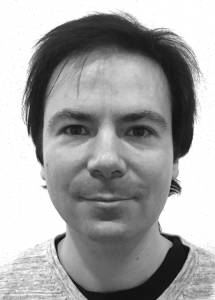 | Thomas-Otavio Peulen, PhD thomas.otavio.peulen@gmail.com UCSF, USA | The FRET community emanated from the need of a hub for knowledge transfer. I fret on FRET and see newcomers struggling. Thus, we, the experts, have to make our techniques accessible to ensure correct analyses of experiments. As an elected member of the advisory board I will promote (i) open exchange formats, (ii) platforms open code of published algorithms, and (iii) education platforms. As chaperone for integrative modellers and experimentalist alike, I will facilitating the access of advanced spectroscopy for experimentalist and modellers to prepare our field for future complex biological challenges. | Biography Study environemntal systems during my M.Sc. at Kevin Wilkinson’s group (Universite de Montreal) I learned about fluorescence spectroscopy. During my PhD (Prof. Claus A.M. Seidel, Heinrich-Heine University) I advanced analysis and simulation methodologies for time-resolved FRET and FRET-based integrative structures studied in vitro and in living cell. Based on that, FRET-based structures are accessible through the FRET positioning system (FPS). Using Bayesian approaches and closely integrating simulations and experiments, I forged an open interactive platform (ChiSurf) for ensemble, single-molecule, and imaging data. Currently, I combine microscopy with spectroscopic contributing to the integrative modeling platform at UCSF in Andrej Sali’s lab. I combine information from MS, EM, and electron tomography with fluorescence and super-resolution microscopy to leverage the potential of fluorescence in studying large assemblies in cells. |
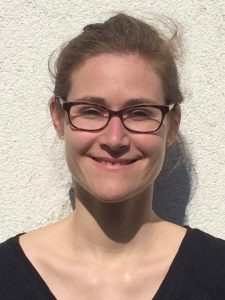 | Sonja Schmid, PhD s.schmid@tudelft.nl TU Delft, Netherlands | My passion in science is about protein dynamics, and smFRET time traces are of course a formidable way to 'watch proteins at work'. Currently, I co-organize the kinSoftChallenge.com to benchmark software tools for the kinetic analysis of smFRET time traces. I am happy to serve the community in this – or other – ways. It's great to see the FRET community joining forces, and I am ready to assist in further promoting this exceptionally elegant & versatile technique. | Biography After studying NanoScience at Basel University, Switzerland, I got my PhD in biophysics from TU Munich D, where I worked in Thorsten Hugel’s lab. While investigating the conformational dynamics of the chaperone protein Hsp90 by single-molecule FRET, we searched for a statistically robust solution to quantify & model our intriguing FRET time traces. This led us to SMACKS, the Single-Molecule Analysis for Complex Kinetic Sequences. Since September 2017, I am a postdoc in Cees Dekker’s lab at TU Delft, The Netherlands, where I still pursue my fascination for the protein nanoworld, currently using electrical nanopore detection. Since August 2018, I am a grantee of the Swiss National Science foundation. (twt: @sciSonja) |
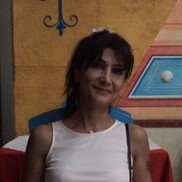 | Oya Tagit, PhD oyatagit@gmail.com Radboud Institute of Molecular Life Sciences, Netherlands | FRET is a highly useful tool with great potential to answer many biologically and clinically relevant questions. There is a strong cross- and inter-disciplinary component that makes FRET appealing to a broad scientific community. From the synthesis of novel FRET probes with higher detection sensitivity to the development of computational tools for more accurate analysis of complex data, FRET benefits from advancements in experimental and computational research in nanomaterials science and chemistry. However, the link between FRET and biologists is weaker -if not missing- compared to other disciplines. As a member of the advisory board, I will work on strengthening this link. For instance, we can organize scientific events (e.g. meetings, seminars, webinars) for non-experts to demonstrate the potential of FRET in (broadly expressed) biology research. Another idea is to build online platforms to discuss and potentially develop new collaborations among different disciplines. | Biography I obtained my PhD at the MESA+ Institute for Nanotechnology (University of Twente, Enschede, the Netherlands), where I worked on the development of biosensors based on stimuli responsive polymer/quantum dot hybrid nanostructures for monitoring temperature at the nanoscale. During my PhD, I collaborated with the Institute of Materials Research Engineering (IMRE, A Star) in Singapore and worked there as a visiting researcher. After my PhD, I obtained an EU grant under Marie Sklodowska-Curie actions to implement my research on the FRET-based detection disease biomarkers at the University of Paris Sud, France. I currently work at the Radboud University Medical Center and develop nanomedicines and theranostic agents for cancer immunotherapy. |
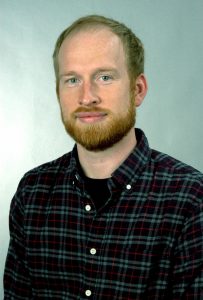 | K. David Wegner, PhD karl-david.wegner@bam.de Federal Institute for Materials Research and Testing (BAM), Germany | The establishment of the FRET community is a perfect opportunity to create a hub for the exchange of exciting new developments, discuss problems and connect to other researchers in our field. But it can be also an access point for researchers of other disciplines to see the advantages of FRET for their investigations and thus help to make this method more popular and better understood. Important for this young community will be to grow, as the current member number is not corresponding to the number of researchers working with FRET. As a member of the advisory board, I would support the organization of networking activities accessible especially to young researchers, such as webinars or online discussion rounds (next to classic conferences). As a supporter of Open Science, I would help to create a repository enabling the sharing of analysis algorithms, discussion of preprints and knowledge exchange. In this way, we can foster together FRET as a very versatile technique. | Biography I completed my PhD in the group of Prof. Niko Hildebrandt (University of Paris-Sud, France) in 2015, where I became fascinated by the powerful combination of the unique photophysical properties of semiconductor nanocrystals (also termed quantum dots, QDs) and FRET. I was working on the development of highly sensitive immunoassays for the multiplexed detection of cancer marker using lanthanide terbium complexes as FRET donors and QDs as acceptors. To fully exploit the potential of QDs in FRET applications, I joined the Peter Reiss lab (CEA, Grenoble, France) as a Postdoc working on the synthesis and the tailoring of the optoelectronic properties of QDs. In 2018 I was awarded the Adolf-Martens Fellowship and shortly after could obtain a Marie Sklodowska-Curie Fellowship at the Federal Institute of Research and Testing (BAM, Berlin, Germany) in the group of Ute Resch-Genger. Currently, I focus on the development of new QD designs for FRET applications in biosensing and bioimaging. |
Young investigator
| Mission statement (Please click the plus on the left to see the biographies) | |||
|---|---|---|---|
 | Richard Börner, PhD richard.boerner@hs-mittweida.de University of Applied Sciences Mittweida, Germany | I consider myself as part of the FRET community since I started to use single-molecule FRET to study the metal ion dependent folding and function of RNA. To except FRET as a standard, the FRET community needs to provide standardized experimental procedures and software tools for all steps of analyzing FRET trajectories, not only to provide absolute distance measures, but to enrich structure-based models with kinetic data to follow (bio)molecule in motion. As an active member of the FRET community I will help to 1) standardize FRET: I will serve the FRET community by developing open software tools, such as our Matlab-based software package MASH-FRET, to equip FRET users of all fields with a reliable and unbiased data analysis. 2) connect the FRET community with industries: I will focus on the application of FRET in medical diagnostics and pharma industries. 3) connect student with the FRET community: I will teach motivated students in biophysics, biophotonics and all aspects of FRET. | Biography Richard Börner got a training in health physics and first concentrated on cancer treatment with radiation therapy at the University Hospital Halle (Saale). After he finished his Masters degree in physics, Richard decided to switch gears and became a PhD student and member of the newly founded single-molecule biophysics group of Chrisitan G. Hübner at the University of Lubeck. As a PhD student he designed confocal microscopes with multi-parameter fluorescence detection capabilities, especially made to investigate the dyn. 3D-orientation of single dipoles in anisotropic media from ns to s. He received his PhD with distinction in 2013 and moved on to Zurich, where he joined the Lab of Roland Sigel. At the University of Zurich he learned all about RNA handling and he was leading the smFRET subgroup. He investigated Cy dyes in the realm of RNA and studied the metal ion dependent folding of RNAs. Only recently, he became assis. prof. at the University of Applied Sciences Mittweida, Germany. |
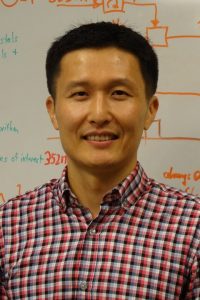 | Hoi Sung Chung, PhD chunghoi@niddk.nih.gov NIH, USA | Single-molecule FRET has been an indispensible research tool in many areas in both physical and biological sciences. My group focuses on investigating protein conformational dynamics on fast time scales ranging from microseconds to milliseconds. We have been developing various analysis methods for this purpose including a photon trajectory analysis using a maximum likelihood approach (we use particularly a method developed by Gopich and Szabo at NIH). Recently, we could extend this method to fast three-color FRET. I believe our expertise greatly complement other techniques used in various groups in this community. I am very excited at this opportunity to join and work in the advisory board to establish and share standard methods that can be widely used. | Biography Dr. Hoi Sung Chung received a B.S. and an M.S. in Chemistry from Seoul National University, South Korea. Dr. Chung then pursued graduate studies in Dr. Andrei Tokmakoff’s group at Massachusetts Institute of Technology. He studied protein folding using transient two-dimensional infrared spectroscopy. Dr. Chung became interested in heterogeneity in biomolecular processes, and joined Dr. William Eaton’s laboratory at the National Institutes of Health, as a post-doctoral fellow in 2007. By employing single-molecule fluorescence spectroscopy, he investigated a new and very important property of protein folding, namely, transition path, which contains all the mechanistic details of the folding process. He became a principal investigator in the Laboratory of Chemical Physics at NIH in 2015. He continues to use single-molecule fluorescence spectroscopy to investigate various molecular processes of intrinsically disordered proteins including binding, folding, and aggregation. |
 | Prof. Thorben Cordes cordes@biologie.uni-muenchen.de LMU Munich, Germany | My research revolves around the application of single-molecule techniques - and in particular smFRET - towards (membrane) protein complexes. I am interested in understanding their biological mechanisms, but also in developing appropiate methodology for this purpose. I would like to serve on the advisory panel of the FRET community, since I consider it essential to establish smFRET now as an accepted and reliable tool for integrative structural biology using its unique features to map structure and function of biomolecules and (bio)chemical processes in space and time. To achieve this goal, i.e., to get smFRET generally accepted in other science communities, I initiated a blind comparison-study with Claus Seidel and Don Lamb in 2018 to probe the ability of smFRET for discovery and quantification of conformational dynamics in proteins. In a community-paper in preparation, we will soon describe the precision and accuracy of inter-dye distances in two model proteins with slow conformational motion and aspects related to stochastic labelling, long-term storage and stability of proteins. In this blind study comprising ~20 labs, we successfully confirmed the ability of smFRET to discover and quantify conformational dynamics in proteins on different timescales from seconds to milliseconds. Based on my experience with smFRET over the past 12 years, I believe that I can contribute to the community on the side of proper dye choices, dye labeling procedures, and provide recommendations for good laboratory practices regarding smFRET measurement and data analysis. | Biography Thorben Cordes studied chemistry at TU Braunschweig (GER) and obtained his PhD in biophysics from LMU Munich (GER) in 2008 specializing in spectroscopy, photophysics and photochemistry. As a postdoc he joined the single-molecule community and in particular the smFRET field working in the labs of Phillip Tinnefeld (Munich, GER) and Achillefs Kapanidis (Oxford, UK). He became a PI at the University of Groningen (NL) in 2011, where he started to apply smFRET to membrane protein complexes and molecular motors. He moved back to LMU Munich in 2017 and currently currently runs the group “Physical and Synthetic Biology”, which uses smFRET and single-molecule approaches to gain insight into the molecular mechanisms of membrane transport and classical chemical reactions. Over the past years he has also been developing functional fluorescent probes and biophysical assays to characterize (bio)chemical processes and structures in vitro and in vivo. |
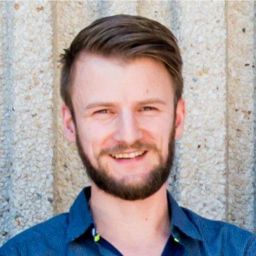 | Jelle Hendrix, PhD jelle.hendrix@uhasselt.be Hasselt University, Belgium | I dream about getting all researchers in the world to know about FRET, and if they use the method, I want them to experiment & analyze in the simplest, best possible way. Concretely, and complementary to the general goals of the community, I want to help to: - UNIFY, by establishing and maintaining a knowledge & expertise repository, both on the literature as on the hard/software side. I want to make this repository smart, that it provides in a straightforward manner the information needed to address a scientific question using available hardware. If needed, researchers are quickly referred to others for help. - UNITE, by grouping as many researchers as possible. My ambition is to help in the organization of workshops/conferences, but also in community advertisement in the (virtual) world. I want to help ensure continued healthy competition and respect in the global FRET network, that will stimulate the field in moving forward faster. | Biography Jelle Hendrix (°1983, married, 3 sons) has a PhD in Biochemistry (KU Leuven, 2010) on the quantitative application of FCS and related methods in live cells. He joined the team of Don C. Lamb (LMU Munich) for 2 years (FWO/DAAD funded) to develop PIE-based CLSM and advanced image correlation methods. Back at KU Leuven, Jelle set up his own team in the Molecular Imaging and Photonics division (Prof. Johan Hofkens) and became the go-to person for all time-resolved fluorescence. He set up a dedicated confocal single-molecule burst analysis microscope to be able to measure molecular structure in realtime using smFRET, leading to over 10 papers on the topic since 2014. After teaching for two years as guest lecturer Biochemistry at UHasselt, Jelle secured an assistant professorship Bioimaging at UHasselt-BIOMED, in follow-up of Prof. Marcel Ameloot. Jelle manages the UHasselt imaging center and is author on 41 (10 corresponding) published A1 papers (h-factor 21, >1000 citations). |
 | Eitan Lerner, PhD eitan.lerner@mail.huji.ac.il The Hebrew University of Jerusalem, Israel | I would be honored to contribute to the FRET community by raising important discussions regarding ways to properly transform experimental raw data to spatial information that can be used as restraints in integrative modelling. That includes proximity ratio to FRET information, retrieving equilibrium distance distributions decoupled from other photophysical effects embedded in the experimental data, transforming these distributions into energetic terms, properly weighting them and using them to drive simulations towards structural models that agree with the experimental results, enhancement of structural model validation using experimental data from other biophysical techniques, etc. I believe that there is still much work to do and believe I can contribute views, concepts and tools for the benefit of the community and ultimately for making multiple time-resolved smFRET measurements useful in integrative structural biology. | Biography I have gained the knowledge and experience in FRET, both at the ensemble and single-molecule levels, to study the conformational dynamics of a variety of biomolecular systems (the B-domain of protein A, p53, amyloid β, Adenylate Kinase, the bacterial transcription initiation complex and recently αSyn). Recently, I have been active in integrative structural biology using spatial constraints from multiple FRET-derived distances. I have co-developed new smFRET-related methods and tools, for the benefit of the scientific community. I worked both with labeled nucleic acid and protein systems and have proven experience in protein site-specific dye labeling. |
 | Bei Liu, PhD beiliu@email.unc.edu Research Assistant Professor University of North Carolina at Chapel Hill, USA | I worked on projects involving in single-molecule spectroscopy in-vitro and FRET-based biosensor imaging in living cells. Both techniques share some common challenges, however, FRET-imaging in living cells faces some unique difficulties. FRET community is a fascinating place to collect/discuss open questions and to share available tools. Working with other advisory board members, I would try to bridge these two communities by: 1) Establish a detailed, dynamic milestone maps to remind the community how we got here step-by-step. All community members can be involved in and each milestone need to be as detailed as possible. 2) Bring in labs from two fields to discuss the current challenges and future directions. I/we will document and organize them to different categories, such as sample preparation, data acquisition, data annotation, visualization etc. 3) Help coordinate meetings, workshops, webinars; organize codeathon to build tools to make sharing codes easier btn labs. | Biography Bei Liu is a research assistant professor in Prof. Klaus Hahn lab at University of North Carolina at Chapel Hill, US. He did his Ph.D. (2014-2019) in the Institute of Biophysics, Chinese Academy of Sciences & Huazhong University of Science and Technology, China, where he worked on single molecule imaging, correlative cryogenenic superresolution light and electron microscopy and helped to develop one of the most popular photo-convertible FPs, mEos3. He then joined Dr. Hahn lab to build FRET-based and environment-sensitive dye based biosensors to monitor protein activities at single molecule level in living cells. He built several microscopes, including single-molecular spectroscopy. He also helped maintain the open-source FRET biosensor processing package in the lab. |
Senior researcher
| Mission statement (Please click the plus on the left to see the biographies) | |||
|---|---|---|---|
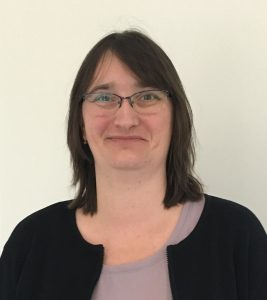 | Prof. Victoria Birkedal vicb@inano.au.dk Aarhus University, Denmark | I will support the FRET community by working to communicate and promote all aspects of FRET studies both within our community and to the scientific community at large. FRET is a powerful technique with many possibilities and applications and I will aim to establish a strong community that will further the development and applications of FRET tools. | Biography Victoria Birkedal received her PhD in Physics from the Ecole Polytechnique Federale de Lausanne, EPFL, in Switzerland in 2001. She did her postdoctoral work both at the University of California, Santa Barbara, USA and at Aarhus University, Denmark. She entered the biophysics field in 2006 and started to lead her own research group in 2011. She is now an associate professor at the chemistry department and interdisciplinary nanoscience center (iNANO) at Aarhus University, Denmark. Her research group investigates molecular interactions and structural dynamics in fundamental biological processes and nanotechnology applications where nucleic acids play an important role. |
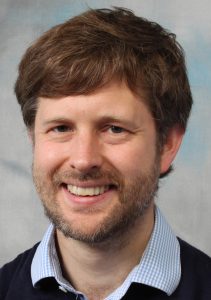 | Tim Craggs, PhD t.craggs@sheffield.ac.uk University of Sheffield, UK | I am passionate about bringing the power of quantitative FRET measurements to non-specialists, whilst also extending the toolbox of FRET methods to enable us to answer ever more complex questions. My lab is a keen proponent of open science (see https://doi.org/10.1101/861922), and establishing community standards for data acquisition, storage and analysis is crucial to this effort. As such, I was excited to help drive the recent multi-lab FRET standardization project, a key step in establishing FRET as an accurate tool for dynamic structural biology. I collaborate with biologists, physicists and chemists, and have developed extensive networks spanning a wide range of scientists, whose interests I will represent at the FRET Advisory Board. I am keen to build bridges between disciplines and expand the use of FRET methods to an ever wider scientific community. | Biography Tim Craggs is a lecturer at the University of Sheffield, UK (appointed 2016). He is an expert in the development and application of Förster Resonance Energy Transfer (FRET) methods to biological systems, with particular experience in DNA-protein interactions. He completed his PhD (Cambridge, UK) developing single-molecule and ensemble methods to study protein folding. Subsequently, he helped to establish a new single-molecule lab (St Andrews) developing FRET approaches to study the structure-specific nucleases XPF and FEN1. He won a prestigious Lindemann Trust Fellowship to continue his investigation of DNA-protein interactions (specifically DNA Polymerase I) at Yale with Cathy Joyce (2010), and returned to the UK to work with Achillefs Kapanidis (Oxford, 2011) where he used smFRET to determine the structure and dynamics of a protein-DNA complex. His multidisciplinary skills span DNA and protein biochemistry, ensemble and single-molecule biophysics and molecular modelling. |
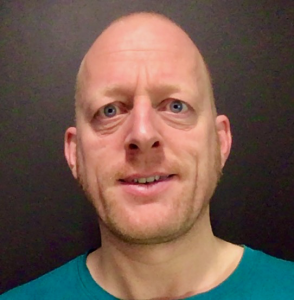 | Prof. Niko Hildebrandt niko.hildebrandt@univ-rouen.fr Université Paris-Saclay / Université de Rouen Normandie, France | In my opinion, the FRET community should show that FRET is so much more than a structural tool used in single molecule spectroscopy and microscopy. The advantages of FRET for biosensing, clinical diagnostics, and bioanalysis (in both spectroscopy and imaging) can provide significant benefits to many biological studies and the FRET community should encourage biologists to use more FRET. While standards and software are certainly important (and guidelines to properly use, analyze, and interpret FRET should be further communicated), they do not make the actual research. If the FRET community can manage to connect people from different disciplines to discuss and collaborate and to communicate how much fun FRET can be (in addition to its scientific usefulness), then we will have accomplished a great deal of advancing FRET. And after the FRET conferences in 2011 and 2016 in Göttingen, we should maybe think about organizing another one in 2021 or 2022! | Biography Niko Hildebrandt is Full Professor at Université Paris-Saclay and head of the nanoFRET group (nanofret.com) at Laboratoire COBRA (Chimie Organique, Bioorganique, Réactivité et Analyse) in Rouen (Normandy, France). He holds a diploma in Medical Physics (2001, TFH Berlin, Germany) and a Ph.D. in Physical Chemistry (2007, University of Potsdam, Germany). From 2008 to 2010, Niko was group leader at the Fraunhofer Institute for Applied Polymer Research in Potsdam. Afterwards, he was head of the NanoBioPhotonics group at the Institute for Fundamental Electronics (2010 to 2016) and the Institute for Integrative Biology of the Cell (2016 to 2019) in Orsay (France). From 2014 to 2019 he was a member of the Institut Universitaire de France. Niko’s main research interest is time-resolved and time-gated photoluminescence spectroscopy and microscopy and the application of lanthanides and nanomaterials for multiplexed FRET biosensing. https://scholar.google.com/citations?hl=&user=G5VNT_cAAAAJ |
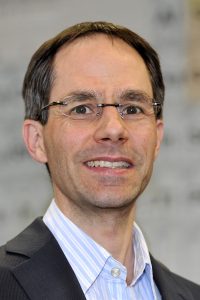 | Prof. Thorsten Hugel th@pc.uni-freiburg.de University of Freiburg, Germany | Single-molecule FRET is increasingly being used to determine dynamics and dynamic structures of biomolecules. However, methods of data acquisition and evaluation differ from lab to lab. When I entered the smFRET field, I asked an expert which kinetic data analysis I should use. I was surprised when he replied: "This is hard to say, because I often do not understand how experimentalists analyze their data and I am not sure they do". I am convinced that we are better now, but in my opinion we are still a long way from having clear (understandable) procedures for data acquisition and evaluation. My mission is to promote understanding of all facets of smFRET, including setting standard procedures wherever possible. | Biography Thorsten Hugel studied physics in Freiburg (GER) and Bristol (GB). He obtained his PhD in 2003 from the Ludwig-Maximilians-Universität München (LMU) in the group of Hermann Gaub, researching into molecular machines using AFM and light absorption. From 2003-2005 he did a postdoc at the University of California Berkeley (USA) in the group of Carlos Bustamante, where he investigated the bacteriophage phi29 using single molecule fluorescence and magnetic tweezers. In 2005 he became a junior professor at the Department of Biophysics and at the Institute of Medical Engineering of the Technische Universität München (TUM). At these institutions he was promoted to Assistant Professor (2008) and Associate Professor (2011, tenure). In the same year he was awarded the Rudolf-Kaiser-Preis 2011. In 2014 Thorsten Hugel was offered a professorship at the Institute of Physical Chemistry, Albert-Ludwigs-Universität Freiburg (http://www.singlemolecule.uni-freiburg.de). |
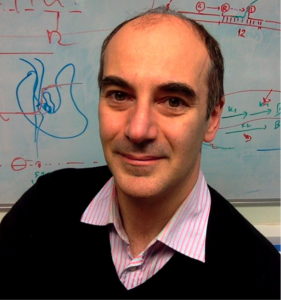 | Prof. Achillefs Kapanidis kapanidis@physics.ox.ac.uk Oxford University, UK | I have been part of the wonderful world of FRET spectroscopy continuously for 26 years and am familiar with its strengths, potential and challenges associated with both ensemble and single-molecule FRET. The FRET-community effort is important since it can address challenges encountered in the field and help FRET users and applications to continue to grow. As a advisory board member, I will focus on three areas: identifying the main technical challenges in implementing FRET techniques and data analysis, and discussing possible solutions; identifying the grand challenges the field needs to address to achieve better spatial and temporal resolution, higher throughput and maximal information content; and provide training to both new and experienced FRET users via organizing workshops on the methods and applications of FRET. I am also excited to work collaboratively with other colleagues around the world to tackle problems and explore opportunities difficult to undertake as a single group. | Biography Achillefs Kapanidis studied Chemistry at the Aristotelian Univ of Thessaloniki (Greece) and completed his PhD in Biological Chemistry at Rutgers Univ (USA). After holding research scientist positions in single-molecule biophysics at Berkeley and UCLA, he became a senior lecturer at Oxford Univ in 2005, and a Professor of Biological Physics in 2013; Prof Kapanidis has also been an ERC grant holder and is currently a Wellcome Trust Investigator. Prof Kapanidis is currently leading a group of physical and biological scientists (the “Gene Machines” group) which studies microbial biological machinery in gene expression, maintenance, and regulation, with a focus on gene transcription and DNA repair. The main tool of the group is single-molecule fluorescence microscopy, including a variety of FRET methods. Prof Kapanidis has also been pursuing miniaturized single-molecule imaging, a project that culminated in the formation of the Oxford Nanoimaging spin-out. |
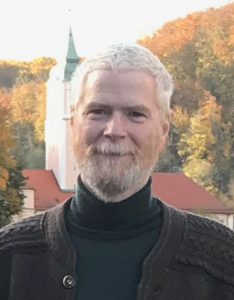 | Prof. Don C. Lamb d.lamb@lmu.de LMU Munich, Germany | My group specializes in the development of quantitative fluorescence methods and analyses. We have expertise in single-pair and three-color FRET experiments (both via TIRF and burst analysis) and are developing ways of extracting dynamic information from this type of FRET data. As my mission, I wish to stimulate communication between members of the FRET community and disseminate the latest advanced methodologies to enable their power to be realized by a broad number of researchers. I also see the role of the advisory board as a platform for discussion and recommendations for issues that are relevant to the FRET community including: quantitative analysis approaches, open science practices and free exchange of published software and data, the data format and storage practices amenable for exchange of data and software, the organization of FRET workshops and conferences. As an advisory board member, I would have an open ear for the needs of the community. | Biography Education: BS in Mathematics and Physics (Illinois Wesleyan University) MS and PhD in Physics (University of Illinois at Urbana Champaign) Habilitation: Physical Chemistry (Ludwig Maximilian University (LMU), Munich) Work Experience: Detector Development (Fermilab/CERN) Medical Physics / Laser Interaction with tissue (Harvard Medical School, Wellman Laboratories of Photomedicine, Vanderbilt University) Biophysics (University of Illinois, University of Ulm, LMU) Currently Professor for Biophysical Chemistry at the LMU, Munich Research Interests: Single Molecule Fluorescence Methods (single-pair FRET, three-color FRET, Single Particle Tracking), Advanced Microscopy Methods (FLIM, (R)ICS, Super Resolution), Live-Cell Imaging, Fluorescence Fluctuation Spectroscopies, Single Virus Tracing / HIV Assembly, Protein function and dynamics, Chaperon Assisted Protein Folding, Ligand-Receptor Interactions, DNA Nanodevices. |
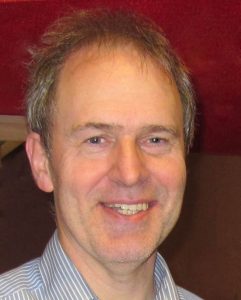 | Prof. Yves Mely yves.mely@unistra.fr University of Strasbourg France | As a user of FRET from the very beginning of my scientific career, I saw its evolution from a spectroscopic ruler to a major tool in the monitoring of molecular interactions in cells and, ultimately, in investigating complex mechanisms at the single molecule level. Due to the ever increasing number of FRET developments and applications, the organization of the FRET community is timely. I would be happy to participate in this new adventure and share my experience in the field. Obviously, one of the key roles of the board will be to disseminate through all existing information channels the latest developments in the acquisition and processing of FRET data as well as in FRET applications, but also to provide information on the basic principles, the controls requested and the possible pitfalls. | Biography Yves Mély is professor of biophysics at the Faculty of Pharmacy at the University of Strasbourg. Pharmacist (graduated in 1984), he got a PhD in biophysics (1988). He was appointed lecturer in 1989, then became full professor in 1998. He is leading the "Biophotonics of molecular and cellular interactions" team since 1999 and the laboratory of Bioimaging and Pathologies since 2009. Its research activity focuses on the development of fluorescence techniques and probes and their application to characterize the properties and functions of a large range of proteins in interaction with nucleic acids and lipid membranes. He is the chair of the conference series "Methods and Applications in Fluorescence" since 2011. He is a senior member of the Institut Universitaire de France since 2018. |
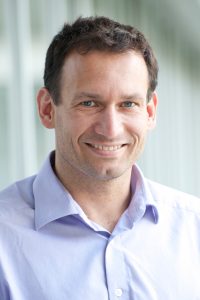 | Prof. Jens Michaelis jens.michaelis@uni-ulm.de Ulm University, Germany | I want to further develop smFRET methods for quantitative distance measurements and structural analysis. Currently I am focussing on different kinetic dye models that allow us to test currently used approximations for quantitative distance information. It will be important to extend these models to be used for dynamical structural analysis on all time-scales accessible by smFRET experiments. Setting standards within the global smFRET community will be an important goal in order to reach a broader acceptance of this novel methodology. | Biography My laboratory has focussed in the last 15 years on developing novel smFRET tools with a particular focus on obtaining quantitative distance information from single molecule FRET experiments. In particular we have developed the Nanopositioning System (NPS) which uses Bayesian Parameter information to determine distances within smFRET networks (e.g. Muschielok et al. Nature Methods 2008). In order to interpret smFRET data quantitatively it is important to follow precise measurement procedures and together with the Hugel, Seidel and Craggs laboratory we have led a world wide initiative to develop standardised methods to obtain quantitative smFRET data. Moreover, in my own laboratory we have developed several different dye models which are applicable for different situation and implemented them in the Fast-NPS software package which is freely available. In my laboratory we are applying these tools to large structural complexes involved in eukaryotic transcription and DNA maintenance. |
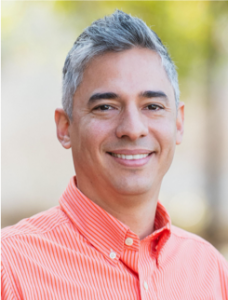 | Hugo Sanabria, PhD hsanabr@clemson.edu Clemson University, USA | As a strong supporter of the establishment of the FRET community, I will continue to work to build a friendly and collegial FRET community for the benefit of all users and developers alike. I am a strong supporter of open source platforms for the acceleration of knowledge. Shared resources and a unified community would help to disseminate best practices and increase FRET perception from colleagues from other disciplines. | Biography Dr. Hugo Sanabria is an Associate Professor at Clemson University. He graduated from Tec of Monterrey, Mexico with a B.S. in Physics Engineer. He pursued a M.S. and Ph.D. in Physics at the University of Houston. After completing his degree, Dr. Sanabria was awarded an NIH training fellowship as a postdoctoral researcher with Dr. M. Neal Waxham at University of Texas Health Science Center in Houston. There he studied Ca2+ signaling proteins involved in learning and memory processes. Later, he was awarded an Alexander von Humboldt fellowship at Heinrich Heine University in Germany under the supervision of Dr. Claus A. M. Seidel, where he developed and enhanced single molecule methodologies to study the structure and dynamics of proteins. In 2014 he joined Clemson University and, in 2016, he was named CU School of Health Research Faculty Scholar. He is a recipient of the prestigious NSF CAREER, the 2019 Board of Trustees Excellence, and the 2019 Horiba Young Fluorescence Investigator awards. |
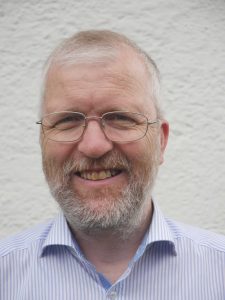 | Prof. Claus Seidel cseidel@hhu.de Heinrich Heine University, Germany | As a member of the advisory board, I am striving for advancing the presence and appropriate use of FRET studies in spectroscopy and imaging. An unbiased cooperation with other scientists within and outside the own field of research is crucial for scientific progress. Thus, I will initiate/support/participate in activities such as (1) establishing the FRET community as a forum for news, developments and dissemination as well as organizing joint workshops and meetings; (2) promoting to share data and tools, to encourage community-driven development of open source analysis tools and to test them in community-driven experimental and computational challenges; (3) establishing guidelines for documentation and validation of FRET experiments, analyses and simulations; (4) networking with other fluorescence methodologies and experimental and computational techniques in the life, chemical and physical sciences so that FRET measurements become a well-recognized tool in integrative studies. | Biography Claus Seidel received his PhD in chemistry from Heidelberg University in 1992 studying molecular aspects of fluorescence quenching reactions. After a 15 months post doctorate at the Sandoz Research Centre in Vienna, where he investigated fluorescence assays for drug discovery, he joined the Max Planck Institute for Biophysical Chemistry in Göttingen for 9 years as independent research group leader developing single-molecule multiparameter fluorescence spectroscopic techniques for biomolecules. In 2002 he became full professor for physical chemistry at Heinrich Heine University Düsseldorf, where he directs a multi-disciplinary laboratory working in four main areas : (1) development of fluorescence measurement and analysis techniques; (2) quantitative FRET studies of proteins and nucleic acids for integrative dynamic structural biology; (3) super-resolution FRET microscopy and Multiparameter Fluorescence Image Spectroscopy (MFIS); (4) photophysics and photochemistry of fluorophores. |
 | Prof. Wieb Van Der Meer wieb.vandermeer@wku.edu Western Kentucky University, USA | I like to have more international FRET meetings, initially every 4 years, building up to every 2 years or every year. Easy access to advice and opinions is important. We should build a FRET community where we can freely communicate with each other, and ask each other questions without worrying whether our questions are stupid or clever. | Biography Have a Ph.D. in Theoretical Physics from the University of Groningen in the Netherlands, 1979. My Ph.D. thesis was on liquid crystals. Switched to Biophysics immediately thereafter. Did Postdocs (9 years) in Leyden with Bert Verveen, Netherlands Cancer Institute in Amsterdam, with Wim van Blitterswijk, University of Texas in Dallas with Dave Jameson, Oklahoma Medical Research Foundation with Peter Sims. I was a visiting scholar in Enrico Gratton's lab for a few months in 1983 at the University of Illinois, Urbana-Champaign. Emigrated to the USA with my family in 1985. Went through the Academic Ranks at Western Kentucky University, Bowling Green, Kentucky, USA, 1988-2018, and am now retired from teaching, but am still active in FRET research. Published a book about FRET in 1994 (it was called RET then) with George Coker (student) and Simon Chen (postdoc). I am interested in all aspects of FRET, but my focus is on the orientation factor, kappa-squared. |
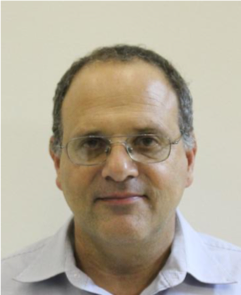 | Prof. Shimon Weiss sweiss@chem.ucla.edu UCLA | As a member of the advisory board, I will champion open science practices, push for opportunities for young / starting scientists, represent the FRET community to other scientific communities, push for standards and recommended practices and protocols, and push for wider acceptance of our methods for static and dynamic structure determination. | Biography Shimon Weiss received his PhD from the Technion in Electrical Engineering in 1989. After a one year post doctorate at AT&T Bell Laboratories, where he worked on ultrafast phenomena in semiconducting devices, he joined Lawrence Berkeley National Laboratory as a staff scientist in 1990, where he continued to work on solid state spectroscopy. In 1994 he re-directed his interest to single molecule biophysics. In 2001 he joined the UCLA Chemistry & Biochemistry and the Physiology departments. In 2016 he also joined the Physics department at Bar Ilan University, Israel (part time). The Weiss lab has been working on ultrasensitive single molecule spectroscopy methods for over two decades. They were the first to introduce the single molecule FRET method and together with the Alivisatos group the first to introduced quantum dots to biological imaging. They have also developed a variety of single molecule spectroscopy methods, a variety of novel detectors for advanced imaging and spectroscopy. |
Industry, facility manager, editors and other
| Mission statement (Please click the plus on the left to see the biographies) | |||
|---|---|---|---|
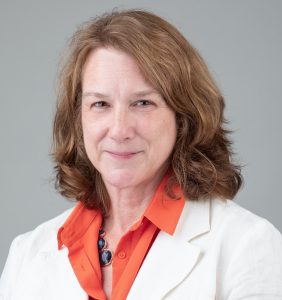 | Prof. Anne Kenworthy akk7hp@virginia.edu Associate Editor Biophysical Journal University of Virginia, USA | Having first published my first FRET paper over 20 years ago, I have a long-standing interest in FRET microscopy and its applications in cell biology and biophysics. Since then, I have been actively engaged in training FRET microscopists as a faculty member of the FRET Microscopy Workshop at the University of Virginia, an event that has taken place every year since 2002. Many of the topics discussed at that workshop, including the development of FRET standards, will be of interest to the broader FRET community, and I will seek to bring those ideas to the table as a member of the advisory board. Furthermore, as an Associate Editor of Biophysical Journal, I will serve as a conduit between the FRET community and scientific publishing community, with the goal of working together to develop best practices for publishing FRET data and disseminating new FRET methods and analytical tools. | Biography Dr. Anne Kenworthy is a Professor and the Associate Director of the Center for Membrane and Cell Physiology at the University of Virginia (UVA) School of Medicine. After earning a PhD in Cell Biology at Duke University, she joined the laboratory of Dr. Michael Edidin at the Johns Hopkins University where she carried out some of the earliest FRET microscopy studies in cells. After a second postdoc in the lab of Jennifer Lippincott-Schwartz at the National Institutes of Health, she joined the faculty at Vanderbilt University School of Medicine, and moved her lab to UVA in 2018. Throughout her career she has utilized a variety of quantitative fluorescence microscopy-based approaches including FRET to questions related to the nanoscale architecture, dynamics, and functions of cell membranes. |
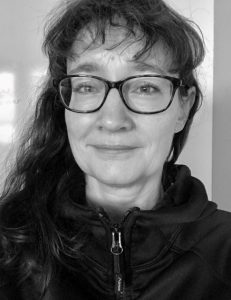 | Marcelle Koenig, PhD koenig@picoquant.com Senior Scientist in Systems Development PicoQuant Berlin, Germany | As application scientist in industry it is crucial to stay in touch with the community, to understand its problems and its visions. As a member of the Advisory Board I‘d like to strongly support the idea of quantitative FRET with generalized protocols and developed FRET standards. Here, a close collaboration between industry and the academic community can help to establish common approaches. In addition, I would like to bring up potential issues of open science and explore how the trends towards open soft- and hardware can walk ‚hand-in-hand‘ with instrument providers. For PicoQuant, the aim has been to support not only our customers but the community itself, e.g. by organizing the Single Molecule Workshop in Berlin since 1995, in which FRET-related issues are always discussed. In this spirit, I would like to take the opportunity to support the FRET community aiming to advance FRET applications so that they can reach out across even more scientific communities all over the world. | Biography My background is in Physics. During my Ph. D. (2005) I worked in the lab of Prof. Claus Seidel at the Max-Planck-Institute for Biophysical Chemistry in Goettingen and at the University of Duesseldorf, Germany, where I performed multiparameter fluorescence studies on the dynamics of single biomolecules. In the following two years I worked as a postdoc at Stanford University, USA, in the lab of Prof. W. E. Moerner where I did tracking experiments of single proteins in live bacterial cells. In addition, I set up a STED microscope for super-resolution imaging. Since 2008, I work as a Senior Scientist in Microscopy Development at PicoQuant in Berlin, Germany. My work focusses on newest developments for our single-molecule sensitive time-resolved confocal microscope MicroTime 200, including superresolution techniques, FCS and its variants like scanning FCS, combinations with other techniques like AFM, deep UV to IR applications, and of course FRET. |
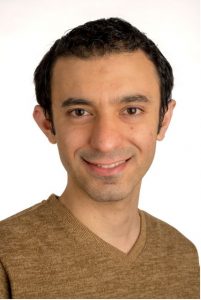 | Hamid Soleimaninejad, PhD hamid.s@unimelb.edu.au Microscopy Application Specialist, Biological Optical Microscopy Platform, University of Melbourne, Australia | As microscopy specialist in advanced imaging and microscopy platform, I’ll try to transform our FRET community knowledge, expertise and potential collaborations to broader and wider disciplines such as biophysicists, biologist and even chemists at different levels. I will support the idea of open FRET microscopy facilities by establishing different lab nodes across the globe and open source FRET software to broader community. In believe in fair collaboration as win-win team work between FRET experts and scientists in other disciplines and I’ll try to fill this gap and take advantage from this opportunity. | Biography Dr Hamid Soleimaninejad is a microscopy platform applications specialist at the Biological Optical Microscopy Platform (BOMP) at the University of Melbourne. He received his PhD in Physical Chemistry from the University of Melbourne in 2018. Hamid studied excitonic energy migration using FRET in solid state Luminescent Solar Concentrator (LSC). As FRET microscopy specialist, he collaborated with broad and diverse range of backgrounds such as biologists and biophysicists across the world. His background is in fluorescence imaging, Time domain (TD) and Frequency domain (FD) fluorescence lifetime imaging microscopy (FLIM), Fluorescence anisotropy imaging (FAIM) and polarization microscopy of complex biological and polymeric systems. |
